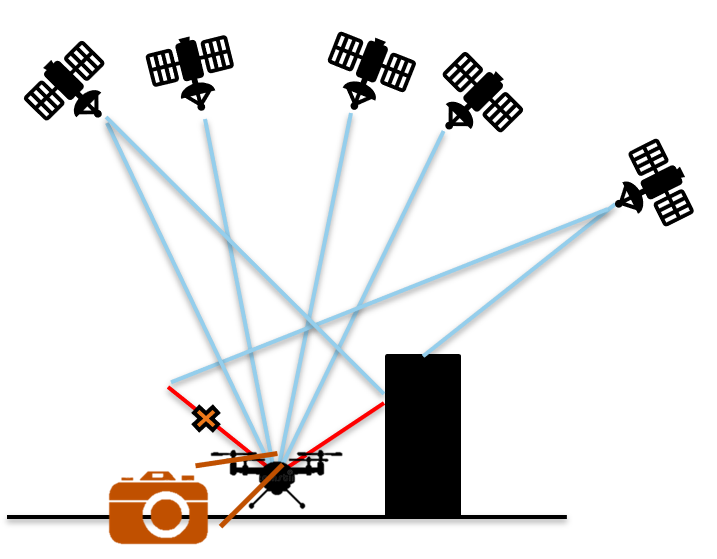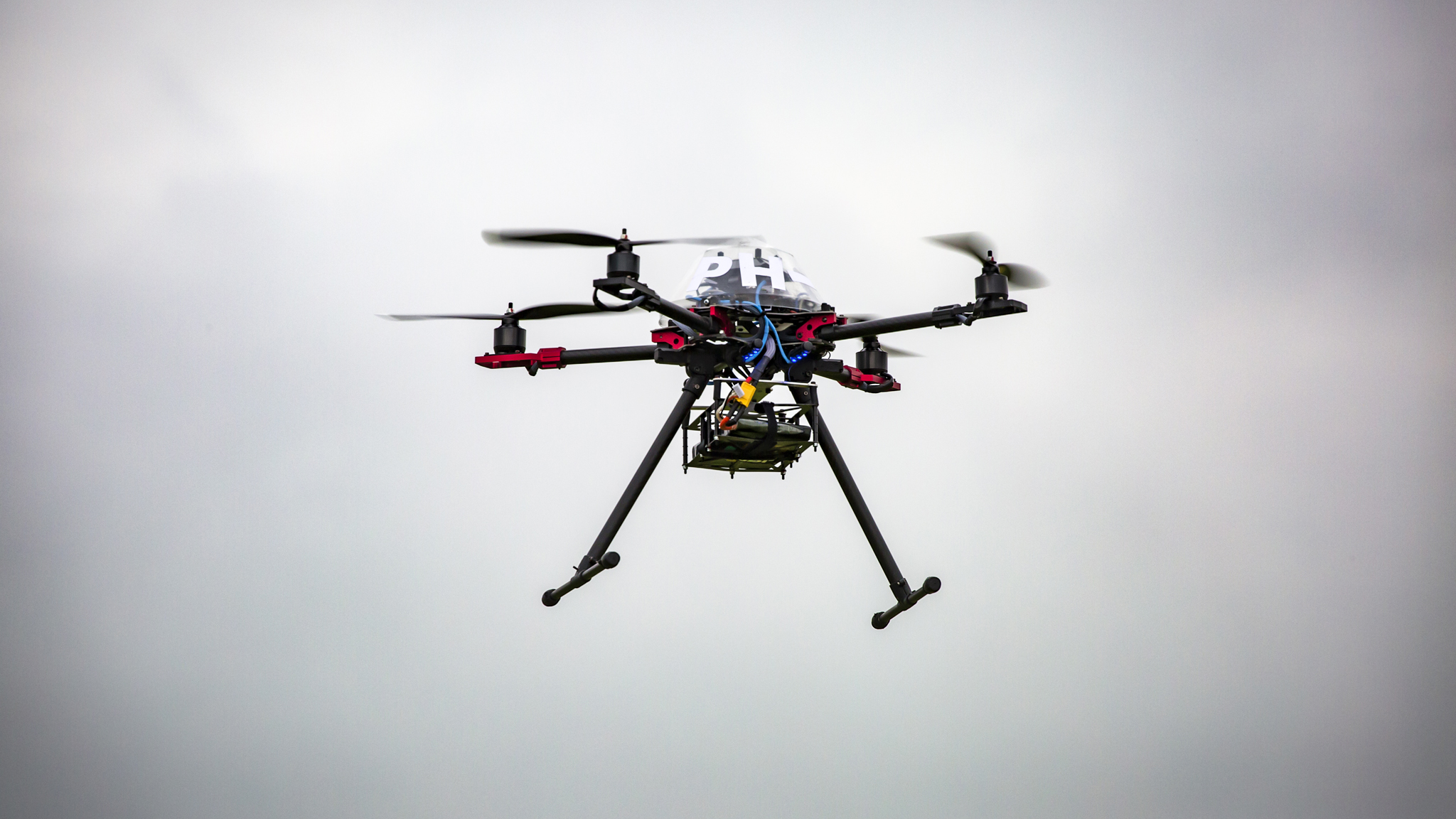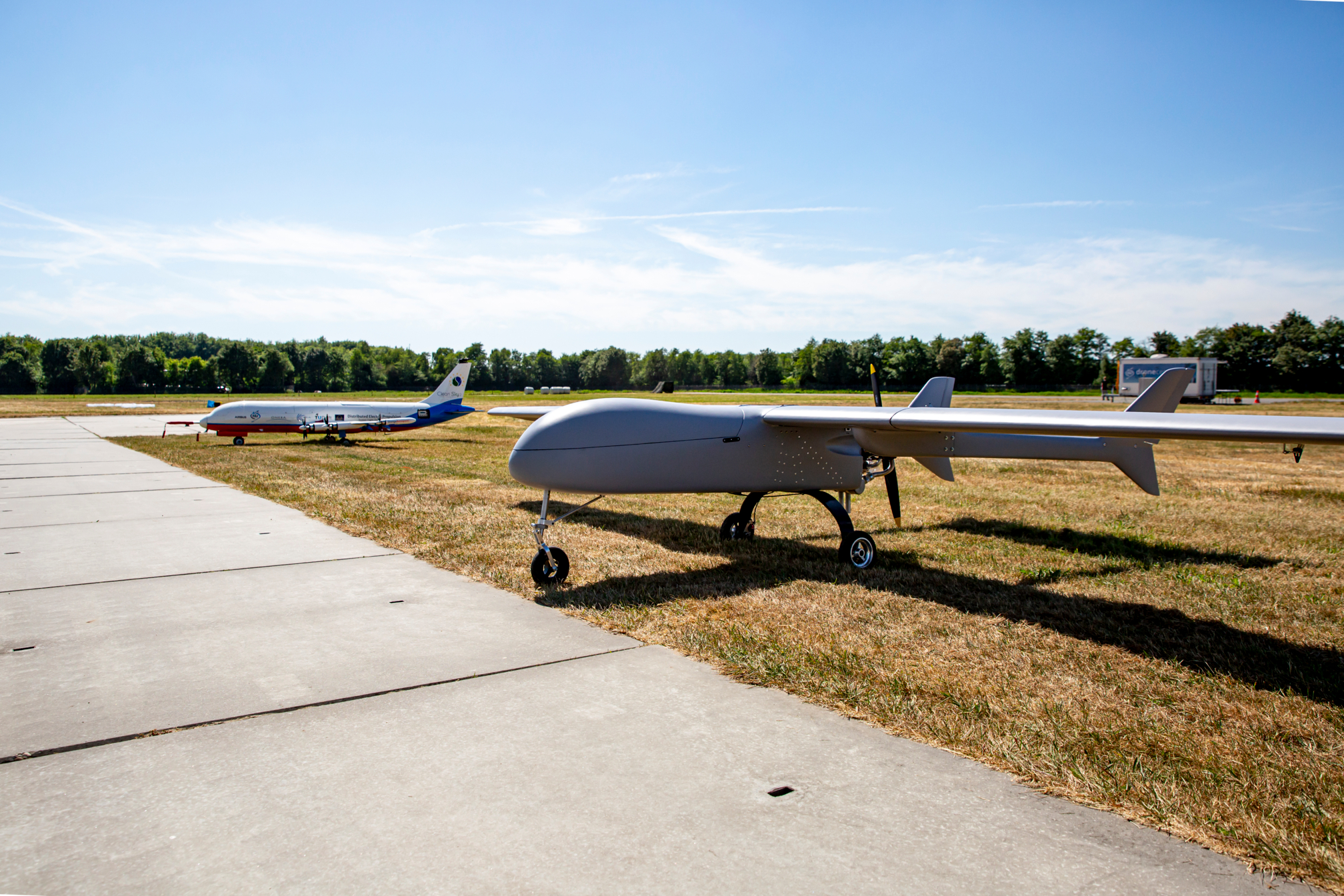Fully autonomous drones will make a major contribution to society, according to Heiko Engwerda, navigation engineer at NLR. “Drones can perform tasks that are dangerous or monotonous for humans. The use of drones can also provide various efficient, logistical solutions.”
One of the main prerequisites for autonomous flight is effective navigation. A drone must be aware of its position and of what is going on in its environment. Engwerda is currently pursuing a PhD on the integrity of satellite navigation on the moon. For the past four years, he has been working on a European research project on behalf of NLR within Horizon 2020 (ARAIMTOO and ARAIMFUSE) on the use of satellite navigation for UAVs. “We looked at it the other way around. Rather than develop new technologies, we examined the technology currently available and how these technologies can best be used in this situation. The current satellite navigation system is already being used in aircraft and is therefore already certified. So we know it works. From a technological point of view, this is a solid starting point, which also saves costs in the development process,” Engwerda says.
What is an Unmanned Aerial Vehicle (UAV)?
A UAV consists of three main components. First of all, the unmanned aerial vehicle. This is an aircraft that operates autonomously or is remote controlled without human pilot on board. The second component is the operating system, which is usually located on the ground, on a ship or on another aircraft. This can be an autonomous or human-operated system. Finally, the communication, command and control system (C3) to connect the operating system to the UAV.
Integrity
He focuses particularly on the so-called integrity of satellite navigation. “Integrity refers to the reliability of the system. Can you rely on the accuracy of the positioning? That is the question we constantly ask ourselves. And if the positioning is not reliable enough, the system should alert the operating system,” he summarises. To determine the reliability of a system, Engwerda and his colleagues look exactly at the 0.001% of the exceptional cases that do not go by the book. These must also fall within a certain margin in terms of accuracy. That is something we must be able to rely on at all times.”

Urban area extra challenging
Accurate and reliable positioning is important because a UAV uses it as a starting point to determine the route to follow. Furthermore, it is crucial to ensure the safety of the drones. The project showed that the use of satellite navigation for UAVs already works reasonably well, especially for use in open areas. Engwerda cites monitoring farmers’ crops as an example. “In the Netherlands, drones are already being used for this purpose.” “In urban areas, the use of satellite navigation is even more complex,” he explains.
There are two sides to this complexity. On the one hand, satellite navigation is somewhat less accurate in urban areas. Engwerda: “Satellites send a type of radio waves to the ground. These signals are picked up by a GPS receiver in the UAV. However, the signals can be disturbed by buildings, trees, radio towers, etc., resulting in less accurate positioning.” At the same time, such obstacles can also make it more difficult for the drone to fly around safely. “For instance, wind currents are frequently formed between buildings, making it extra difficult for drones to maintain course.” The drones must be able to take all this into account. And the most important point off all: “There are a lot of people in cities. People’s safety always comes first, which is why integrity is so important.” All safety risks must be identified and mitigated.
“Most important point off all, there are a lot of people in cities. People’s safety always comes first, which is why integrity is so important.”
Higher accuracy
The basics of the technology are in place, however, improvements are still needed. Satellite navigation for UAVs in the built environment must provide much more accurate information than for aircraft. Engwerda: “There is always a considerable distance between planes in the sky. If a plane’s location is off by ten metres, it is still accurate enough. However, when a plane lands, the location should be more accurate. In the built environment, the accuracy needs to be much higher still. A difference of ten metres is too much. Therefore, it is important to also consider other sensors. Close to the ground, alternative technologies can be used to ensure accuracy. However, this increases the complexity of the algorithm since it has to deal with all the different types of data and link them together to produce a single result.”
Advanced Receiver Autonomous Integrity Monitoring (ARAIM)
Engwerda’s research is part of the European Union-funded ARAIMFUSE project conducted by NLR together with partners. This project studies the use of satellite navigation in areas other than aviation. In addition to UAVs, such as drones, the use in the maritime sector and trains was also studied. The navigation systems in these sectors will soon need replacing and satellite navigation is a potential replacement.
According to Engwerda, such European projects are indispensable for pushing innovation forward. “We cannot conduct this kind of research alone as the Netherlands. It is a huge project involving different perspectives. This makes European cooperation crucial.”
Independent
One advantage of satellite navigation: it works completely independently. “There are, for instance, also systems that communicate with points on the ground to determine the location. Even though this works quite well, you are bound to certain locations where such systems are installed. The idea of UAVs in cities is that the drones can take off and land anywhere. That does not work with this system. Ultimately, a drone that can operate fully autonomously is obviously more widely deployable and cost-efficient,” he argues.

The first tests with UAVs are already being conducted currently. In Zurich, for instance, drones are already flying between hospitals to transport organs, and the ANWB is also conducting tests in this field in the stretch between Meppel and Zwolle. “This does however, all take place under well-defined and controlled conditions,” Engwerda explains. “In Europe, the focus is on safety and the regulations that apply to this safety,” he outlines. “In other parts of the world they are much more lenient with allowing tests and giving demonstrations. Here we are a bit more reserved. We first want to make sure that everything works properly and that it is safe. This sometimes makes development seem slower, but that is not the case.”
Implementation in practice
So what are the next steps? “We have now found a system that seems appropriate for the intended use. We will now extensively test the system to ensure that it works as it should. This mainly involves focusing on those 0.001% of anomalous cases to demonstrate integrity,” Engwerda said.
At the same time, work on the processes to secure the right regulations with European and national governments to use the technology in practice will also start. “These are often long-term processes which also require us to conduct various tests.” In addition, NLR will hold talks with UAV operators to look at incorporating the positioning technology to navigate fully autonomously in urban areas. All in all, it will take at least another ten years or so before the technology can really be put to practical use,” Engwerda predicts. “When the time comes, drones are going to make a big difference.”
What is satellite navigation?
Satellite navigation is a form of radio navigation. At low power, the satellites transmit high-frequency signals. A device on the ground, in the air or on the water can determine its location based on the signals of four different satellites.
Nowadays, this form of navigation is used for both military and civilian use. The best-known example is Google Maps.



